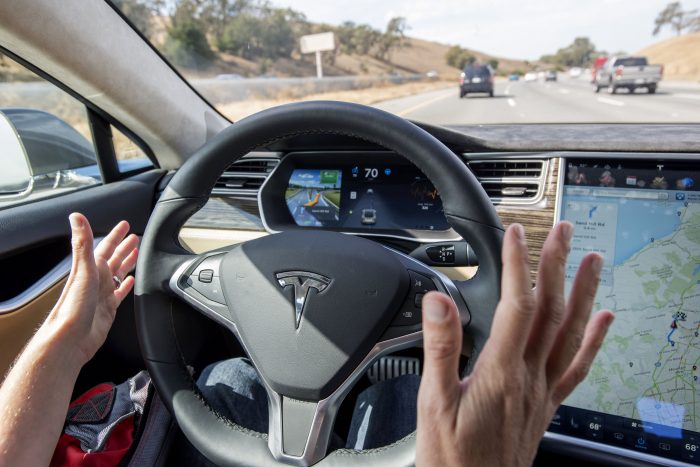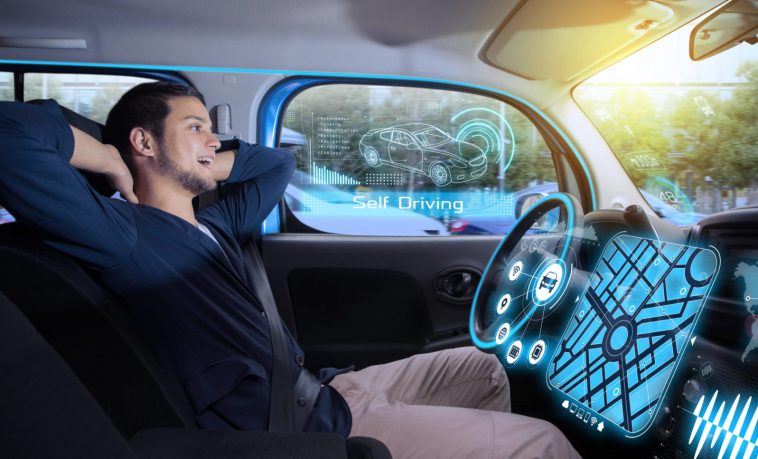Autonomous driving is related to smart travel, smart transportation, and smart cities. It is a major trend in future development, and it will also be a technological transformation that changes social lifestyles. Autonomous driving, in short, is the transformation of the role of car control. Now our travel process is completely inseparable from the role of human beings, whether it is a car, a motorcycle, an electric vehicle, or a bicycle. People control driving tools. These driving tools are more used to speed up the travel process and make long-distance travel faster and more convenient. However, this kind of travel process does not liberate people’s hands. During the travel process, people still need to spend a lot of time to observe the road conditions. Even if it is a taxi, the driver’s role is still a human being. The task is entrusted to the role of the driver, which does not reduce the participation of people in the process of transportation.
The concept of autonomous driving fundamentally solves the need for people to observe traffic conditions when they participate in traffic travel, so that people can be separated from the role of controlling vehicles and can spend more time for entertainment and rest. The concept of autonomous driving has not been proposed in recent years, but the technology has developed so far, and it is still impossible to see the possibility of general use. It may still be the case in the next ten years or longer. The development of autonomous driving also involves policy, technology, In terms of social acceptance and other aspects, many of the contents are not “simple” technical implementations, but more related to social development, which may be the most difficult and most difficult problems to solve.
Returning to the original question, “Can unmanned driving be universalized in ten years?” Here is a concept, that is, what kind of unmanned driving is the unmanned driving? From a technical point of view, unmanned driving can be divided into low-speed automatic driving and high-speed automatic driving. Low-speed automatic driving is the unmanned driving that we see in closed places such as parks, restaurants, and campuses delivering express delivery, delivering food, and connecting passengers. Driving a car, this type of unmanned driving has several characteristics, namely closedness and low speed. This type of unmanned vehicle has a fixed working range, a relatively fixed running path, and a low speed during the work process. , which solves the last mile problem of people taking out and express delivery.
With the development of technology, low-speed autonomous driving will become more and more popular, and will even be applied to all aspects of society. In addition to the common food delivery and express delivery, such as the connection of tourists in tourist attractions, the transportation and loading of goods in ports, mines Scenarios where the working environment is simple, the changes will not be particularly large, and the working distance are relatively short, such as the transportation and placement of mineral materials, will be replaced by low-speed automatic driving. More people will be able to complete other complex tasks and realize the use of human resources. maximize.
However, in the direction of high-speed automatic driving, it may not be able to land as quickly as low-speed automatic driving. After high-speed automatic driving is truly implemented, it will be the same as the current car on the road, which can carry people to achieve long-distance and multi-scene activity. Under the concept of high-speed autonomous driving, it is required that autonomous vehicles can make judgments on different traffic conditions like human drivers, and can respond quickly in the traffic environment with sudden problems, which will be very difficult.
The judgment and action decisions of autonomous driving on road conditions are mainly based on the written code. The written code will determine the reaction of the autonomous driving car when it encounters certain traffic conditions. It is intended to free the autonomous driving car from the shackles of the code. , to generate the same thinking as a human driver, which is technically impossible.
The development of high-speed autonomous driving has two types: bicycle intelligence and vehicle-road coordination. The development mode of bicycle intelligence, due to the high cost, requires more technology to complete the driving of the car, which not only requires a long design time, but also requires a long time in the design process. Considering whether the design cost can be accepted by the public, the development model of vehicle-road coordination can effectively reduce the hardware equipment installed in autonomous vehicles, but it puts forward more requirements for road upgrades and Internet speed improvements.

Moreover, the current traffic laws and regulations are also based on “people”, and more consideration is given to the problems that “people” may have in the process of participating in traffic travel. At this stage, there are no laws and regulations for autonomous vehicles. Compared with low-speed automatic vehicles Driving, high-speed autonomous driving is mainly based on “manned”, so more laws and regulations are needed to ensure the safety of passengers. Ensuring that laws and regulations are developed to make autonomous vehicles common will require more time for discussion and planning, taking into account all possible issues. To sum up, this series of conditions will make it more difficult to popularize automatic driving.
In the question, generalization is also mentioned, that is, automatic driving can be seen everywhere, and even all travel tools are self-driving cars. In the middle, there is a question worthy of discussion, whether there will be automatic driving when automatic driving is implemented. Phases where cars and human drivers coexist? If there is this stage, will the self-driving car and the car driven by the human driver need to be driven separately, or will they directly share the same road? If there is such a stage, when the proportion of self-driving cars reaches, can it be regarded as the generalization of self-driving?
Will there be a stage in which autonomous vehicles and human drivers coexist in the implementation of autonomous driving? Nowadays, many OEMs will use the advanced assisted driving system as an entry point to promote the advanced nature of their own technologies when publicizing them. Driving fatigue is an auxiliary tool to increase driving safety. Only when it fully meets the requirements of the L5 level in SAE can it be regarded as a real autonomous driving. Therefore, the current stage cannot be regarded as a stage where autonomous vehicles and human drivers coexist.
When the self-driving car is actually launched, it is impossible for the car drove
by the human driver to be directly replaced by the driverless car. As a travel tool, the replacement of the car mainly depends on whether its function can meet the travel requirements and the purchasing ability of consumers. Therefore, when self-driving cars land, there will definitely be a stage where self-driving cars and human drivers drive cars to coexist. Just like in the early stage of the popularization of smartphones, many people will still use feature phones. Even though smartphones have been popular for many years, their functions Mobile phones are still used by many people.
When self-driving cars and human drivers coexist, do you need to open dedicated lanes for self-driving cars? Just as in the early days of the emergence of smartphones, there were generally fewer people using them. In the early stage of the implementation of autonomous driving technology, there were not many autonomous vehicles participating in traffic. Setting up a dedicated lane would be very time-consuming, labor-intensive and cost-wasting, because In order for self-driving cars to reach all the places that the driver can reach, if you want to open dedicated lanes, you need to open them on all road sections, including highways, urban roads, town roads and even rural roads. Therefore, after autonomous driving is implemented, autonomous vehicles and human-driven vehicles are more likely to share roads, and one of the criteria for autonomous vehicles to land is whether they can adapt to the requirements of the traffic environment.
So what is the percentage of self-driving cars to be considered universal? This is a difficult standard to measure. Everyone has their own ideas about this concept. The forefront of Zhijia believes that the generalization of automatic driving should be that everyone has adapted to the existence of automatic driving, and most travel is will be provided by autonomous driving. Going back to the original question, can autonomous driving be universal in ten years? Difficult, difficult, because there are too many fields involved, the generalization of unmanned driving will still have a long way to go, so it is still very necessary to learn a driver’s license. Read more science and technology aerospace information attention spacesrobot.com




GIPHY App Key not set. Please check settings